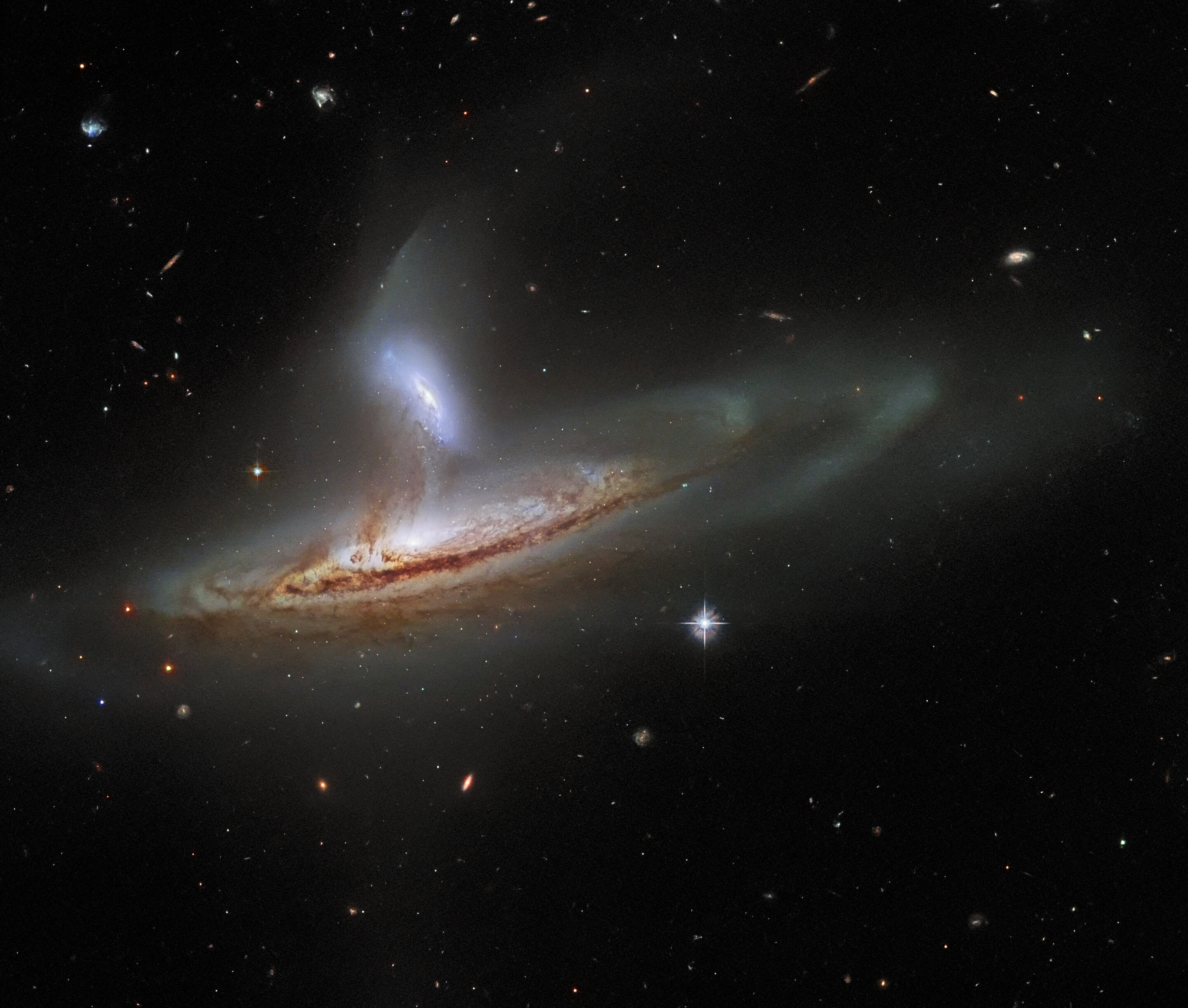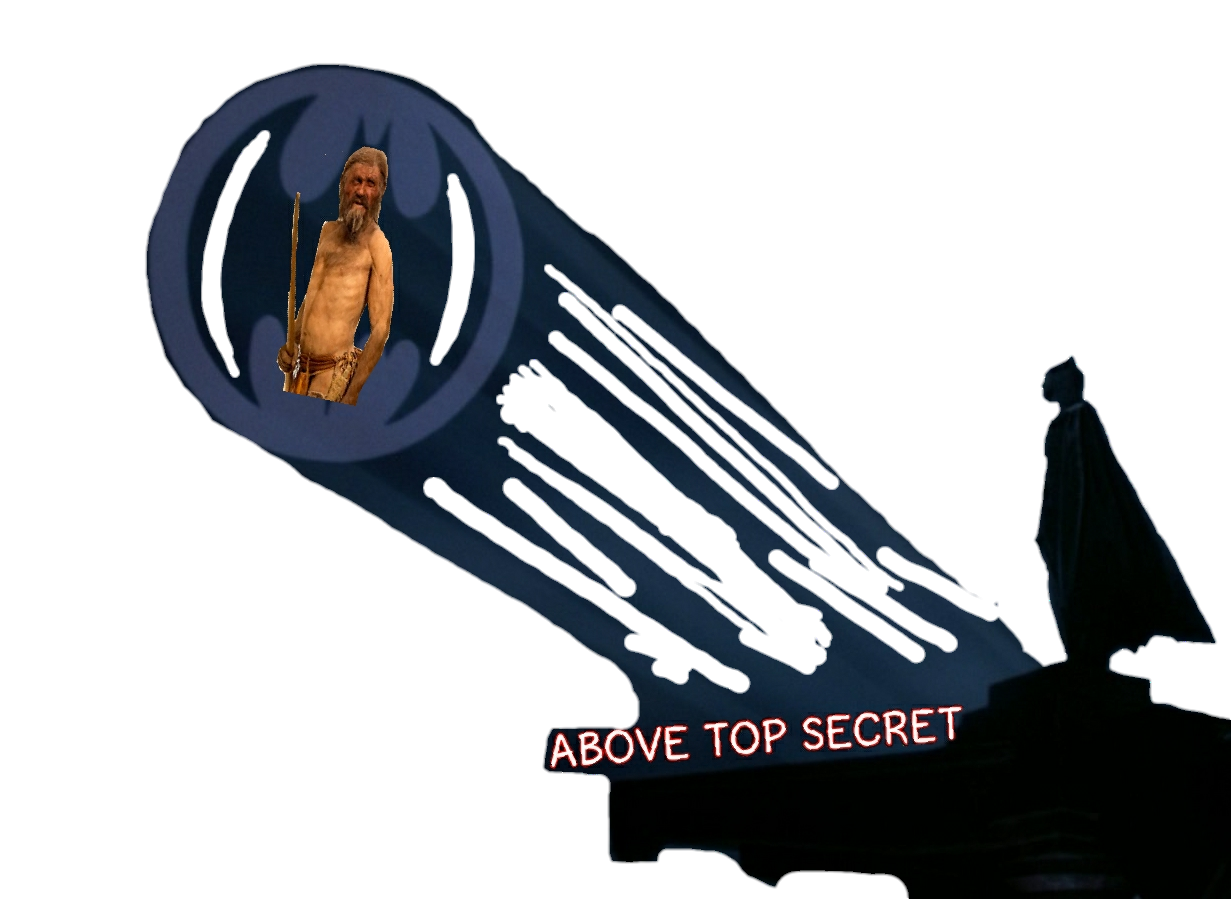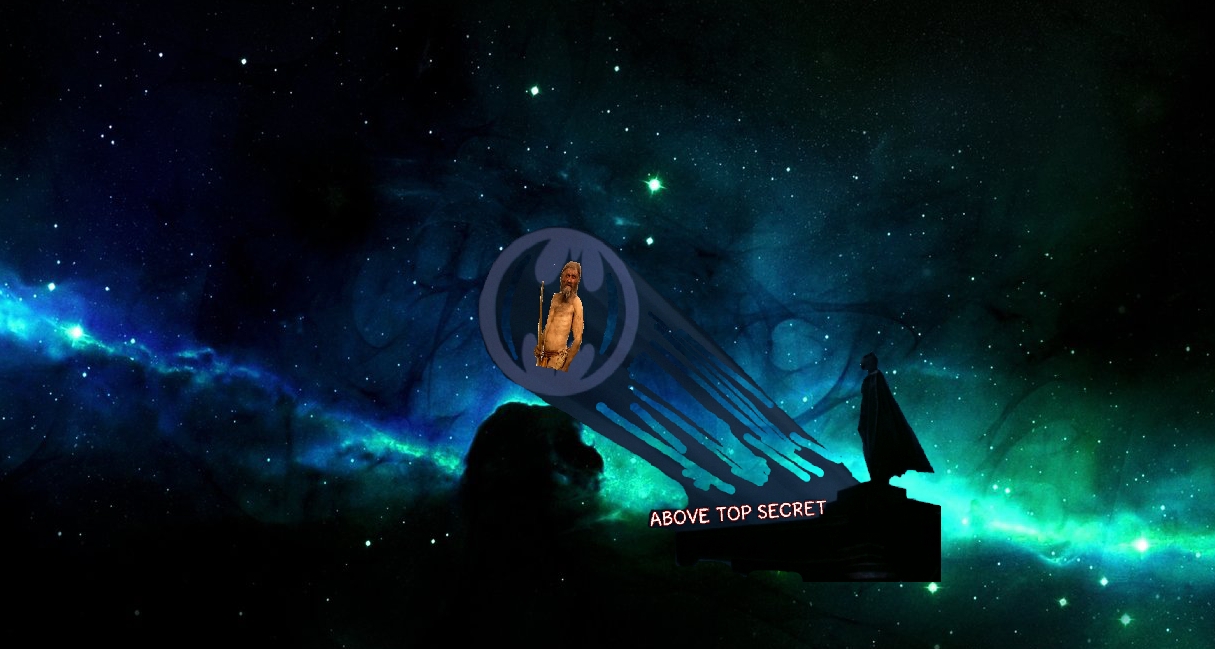It looks like you're using an Ad Blocker.
Please white-list or disable AboveTopSecret.com in your ad-blocking tool.
Thank you.
Some features of ATS will be disabled while you continue to use an ad-blocker.
16
share:
NASA have released this impressive image taken by Hubble of two Galaxies , NGC 169 on the bottom and IC 1559 above it which shows the interaction
between the two as their respective gravitational forces swap matter and even star systems between the two.
The embracing Galaxies are about 150 million Light Years from Earth.

With St Valentine's Day just around the corner how's that for love making on a Galactic scale.
Now that's romance
The embracing Galaxies are about 150 million Light Years from Earth.

This image from the NASA/ESA Hubble Space Telescope feels incredibly three-dimensional for a piece of deep-space imagery. The image shows Arp 282, an interacting galaxy pair composed of the Seyfert galaxy NGC 169 (bottom) and the galaxy IC 1559 (top). Interestingly, both galaxies have monumentally energetic cores known as active galactic nuclei (AGN), although that is difficult to tell from this image, which is fortunate. If the image revealed the full emission of both AGNs, their brilliance would obscure the beautifully detailed tidal interactions we see in this image. Tidal forces occur when an object’s gravity causes another object to distort or stretch. The direction of tidal forces is away from the lower-mass object and toward the higher mass object. When two galaxies tidally interact, gas, dust, and even entire star systems can move toward one galaxy and away from the other. The image reveals this process in action as delicate streams of matter visibly link the two galaxies.
Astronomers now accept that an important aspect of how galaxies evolve is the way they interact with one another. Galaxies can merge, collide, or brush past one another – each interaction significantly affecting their shapes and structures. As common as such interactions may be, it is rare to capture an image of two galaxies interacting in such a visibly dynamic way.
www.nasa.gov...
With St Valentine's Day just around the corner how's that for love making on a Galactic scale.
Now that's romance
edit on 12-2-2022 by gortex because: (no reason given)
Of all cosmic events, I find the merger of galaxies to be the most beautiful.
It's a cosmic dance in space powered by gravitational dynamics.
The visible brush strokes of creation.
It's a cosmic dance in space powered by gravitational dynamics.
The visible brush strokes of creation.
The picture, probably an artists or computer generated image representation of what is going on , looks sort of like a metal shaker shaking Parmesan
cheese on a pizza. No hand visable though, must be the invisable hand of god creating a pizza.
a reply to: gortex
Stunningly beautiful.
Chaos, but beautiful.
Thanks as always for posting these.
Next up, Andromeda Galaxy.

Edit::
youtu.be...
At one point I was watching his shows. He said as galaxy collide, planets, stars... they will pass without hitting eachother. Wish I could find it. It was on the Discovery.
Stunningly beautiful.
Chaos, but beautiful.
Thanks as always for posting these.
Next up, Andromeda Galaxy.

Edit::
youtu.be...
At one point I was watching his shows. He said as galaxy collide, planets, stars... they will pass without hitting eachother. Wish I could find it. It was on the Discovery.
edit on 12-2-2022 by Bigburgh because: Fat Flinger flick issue
a reply to: rickymouse
The picture is an optical light image from Hubble using its Advanced Camera for Surveys so not computer generated or an artists impression.
esahubble.org...
The picture, probably an artists or computer generated image representation of what is going on
The picture is an optical light image from Hubble using its Advanced Camera for Surveys so not computer generated or an artists impression.
esahubble.org...
I'm surprised we have had it so quiet for so long , Comets Asteroids Solar Flares Wandering Black Holes - I still for the life of me look at the Sun
and say just how does it have that much fuel seriously that's the longest fire ever !
a reply to: Ravenwatcher
I have often wondered that myself.
And where all that fuel came from?
Im not questioning it, just wondering.
I have often wondered that myself.
And where all that fuel came from?
Im not questioning it, just wondering.
edit on 12-2-2022 by Oldcarpy2 because: (no reason given)
originally posted by: gortex
a reply to: rickymouse
The picture, probably an artists or computer generated image representation of what is going on
The picture is an optical light image from Hubble using its Advanced Camera for Surveys so not computer generated or an artists impression.
esahubble.org...
On the right there is a full size original...which I am getting close to my max of one hundred fifty gigs without being charged more if I go over. I saw the originals from the Hubble a few times and they do not look like this picture looks. The data collected is processed to make the image, this is most likely not the actual picture from the telescope. Unless they changed the telescope in it in the last two years that I am not aware of. The camera collects frequency data and combines it into a picture then I guess it is colorized.
Maybe you have unlimited data to open that file, we have DSL too, it is very slow.
a reply to: rickymouse
Yeah I the viewer on the right side (not the big full sized file) and it gives you the option to crossfade the image (superimpose the high-res wallpaper-quality galaxy image over the original) in the bottom left when you open the viewer here esahubble.org...
move the slider (blue slider bottom left) left and right and you'll see what I mean
either way makes a good desktop wallpaper whether it came from the telescope's advanced camera or not
Yeah I the viewer on the right side (not the big full sized file) and it gives you the option to crossfade the image (superimpose the high-res wallpaper-quality galaxy image over the original) in the bottom left when you open the viewer here esahubble.org...
move the slider (blue slider bottom left) left and right and you'll see what I mean
either way makes a good desktop wallpaper whether it came from the telescope's advanced camera or not
edit on 2/12/22 by servovenford because: words
edit on 2/12/22 by servovenford because: grammar I can not type
today
edit on 2/12/22 by servovenford because: that's it I'm signing out haha
Honk
So long for us down the road.😊
"Astronomers estimate that the sun has about 7 billion to 8 billion years left before it sputters out and dies. One way or another, humanity may well be long gone by then.Jan 7, 2022
www.space.com... › 14732-sun...
When will the sun die? "| Space😊
originally posted by: Ravenwatcher
I'm surprised we have had it so quiet for so long , Comets Asteroids Solar Flares Wandering Black Holes - I still for the life of me look at the Sun and say just how does it have that much fuel seriously that's the longest fire ever !
So long for us down the road.😊
"Astronomers estimate that the sun has about 7 billion to 8 billion years left before it sputters out and dies. One way or another, humanity may well be long gone by then.Jan 7, 2022
www.space.com... › 14732-sun...
When will the sun die? "| Space😊
edit on 12-2-2022 by Bigburgh because: (no reason given)
a reply to: Ravenwatcher
The equivalent of 15 Billion hydrogen bombs detonating every second inside of the Sun.
The equivalent of 15 Billion hydrogen bombs detonating every second inside of the Sun.
new topics
-
Trump is NOT Racist
US Political Madness: 23 minutes ago -
"I'm seeing Red" by Jesslee and the Marine
Music: 1 hours ago -
Black Holes Could Be The Mysterious Force Expanding The Universe
Science & Technology: 2 hours ago -
Kamala is running pro Palestine ads While simultaneously running pro Israel ads
2024 Elections: 5 hours ago -
Trump holds final campaign rally in Michigan before voting begins Tuesday
2024 Elections: 5 hours ago -
Almost Home
Short Stories: 8 hours ago -
Kamala finally builds a wall...around her home in DC
Jokes, Puns, & Pranks: 9 hours ago -
Ok Melbourne, Really?
Music: 11 hours ago
top topics
-
Predictions for the result
2024 Elections: 14 hours ago, 12 flags -
Trump holds final campaign rally in Michigan before voting begins Tuesday
2024 Elections: 5 hours ago, 11 flags -
Kamala is running pro Palestine ads While simultaneously running pro Israel ads
2024 Elections: 5 hours ago, 11 flags -
Kamala finally builds a wall...around her home in DC
Jokes, Puns, & Pranks: 9 hours ago, 8 flags -
Almost Home
Short Stories: 8 hours ago, 6 flags -
Black Holes Could Be The Mysterious Force Expanding The Universe
Science & Technology: 2 hours ago, 5 flags -
"I'm seeing Red" by Jesslee and the Marine
Music: 1 hours ago, 4 flags -
Ok Melbourne, Really?
Music: 11 hours ago, 1 flags -
Trump is NOT Racist
US Political Madness: 23 minutes ago, 1 flags
active topics
-
Trump is NOT Racist
US Political Madness • 2 • : berbofthegreen -
Trump holds final campaign rally in Michigan before voting begins Tuesday
2024 Elections • 17 • : Vermilion -
True Voter Surpression and an attack on a voter in North Carolina
US Political Madness • 115 • : xuenchen -
New York State Government Kills Peanut the Squirrel and Fred the Raccoon
US Political Madness • 61 • : hangedman13 -
Predictions for the result
2024 Elections • 109 • : Irishhaf -
Transgender woman accuses Hooters of sex-based discrimination for refusing to hire her
Rant • 22 • : zosimov -
Major 2024 Endorsements for Donald J. Trump to be U.S. President Again.
2024 Elections • 18 • : WeMustCare -
"I'm seeing Red" by Jesslee and the Marine
Music • 0 • : Lumenari -
-@TH3WH17ERABB17- -Q- ---TIME TO SHOW THE WORLD--- -Part- --44--
Dissecting Disinformation • 3105 • : 777Vader -
KAMALA HARRIS and Democrats - Acts of Desperation with less than 25 days till Nov 5th 2024.
2024 Elections • 129 • : WeMustCare
16


